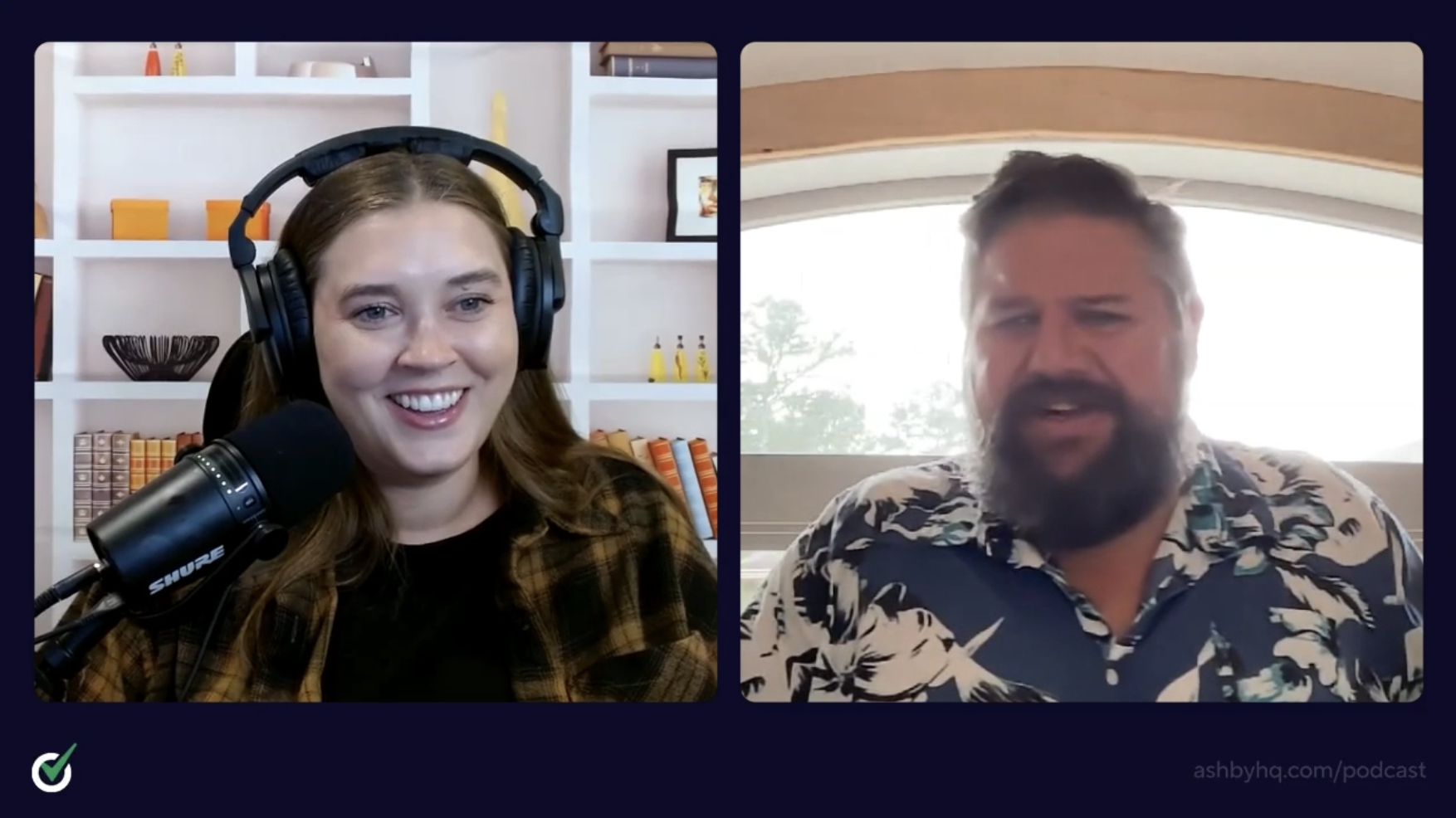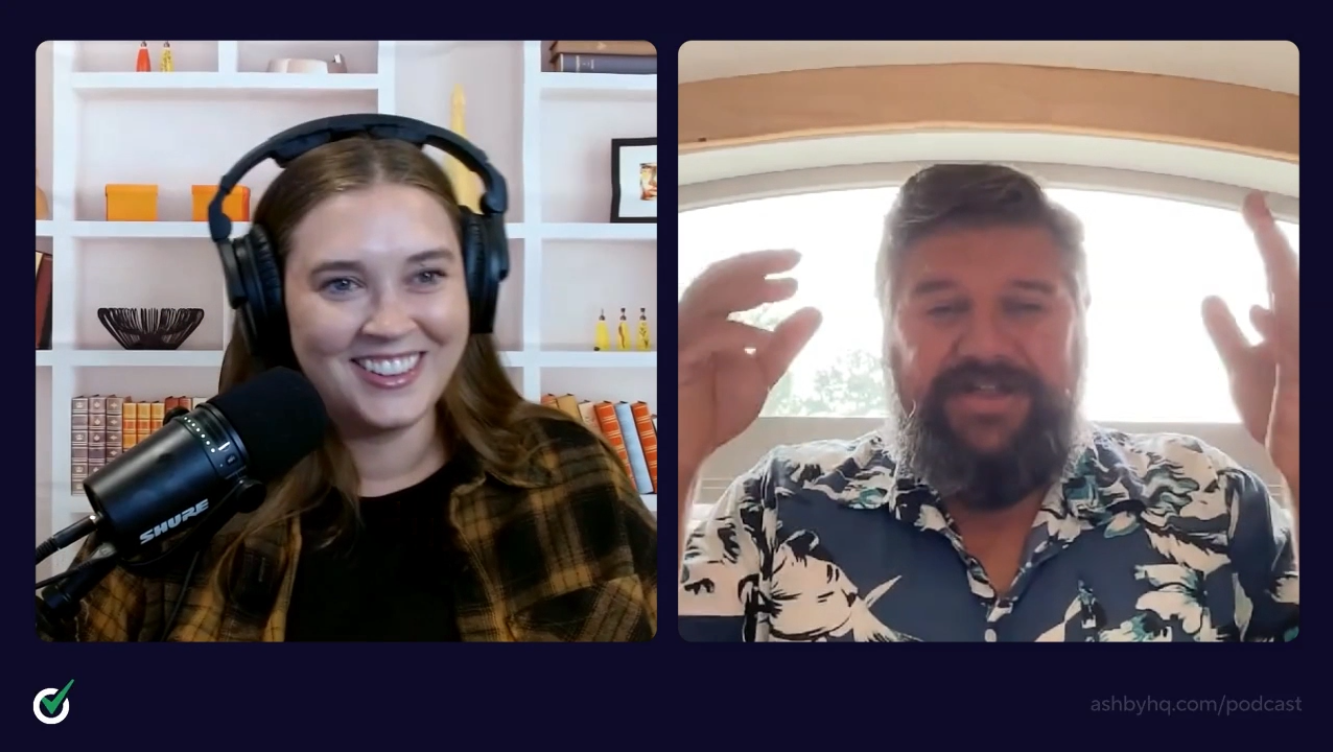Fixing Inbound Recruiting through Titles, Targeting, and Testing
About this Episode
Jim Miller is a veteran recruiting leader with over 20 years of experience at companies like Google, FullStory, and now Ashby. He’s built global sourcing teams, overseen millions of inbound applications, and led hiring strategy across APAC, EMEA, and the US. Jim is known for bringing structure, clarity, and experimentation into every part of the hiring process.
In this episode of Offer Accepted, Jim shares how recruiters can unlock the full potential of inbound by rethinking job titles, descriptions, and search optimization. He walks through why internal mobility should be your first stop, how to test new ideas without waiting for permission, and what it really means to build a connected, data-driven hiring system. This conversation is packed with insights for recruiters who want to challenge tradition and drive measurable impact.
Topics
This Episode's Guest
Jim Miller
VP of People and Talent @ Ashby
Jim is the VP of People and Talent at Ashby with over 22 years of experience in the recruiting space. He spent several years at Google, overseeing recruiting teams in APAC and EMEA, and later serving as the VP of Recruitment at FullStory. Jim is a strong advocate for internal mobility as the most effective channel to fill a role and believes in the power of incremental gains in improving the recruitment process.
Takeaway 1
Inbound isn’t useless, you’re just not using it right 🔍
Candidate behavior has changed. Job platforms function more like search engines, and candidates, including passive ones, are discovering roles based on how well those roles match search intent. If your job title and description are not aligned with what people are actually looking for, you are missing qualified talent before they even see the post.
Why It Matters:
Inbound can be a high-quality channel, but only when it is set up for discoverability. Job titles, keywords, and structure determine whether your post reaches the right people. When optimized correctly, inbound functions like sourcing in reverse where the candidate is doing the search.
Quick Tips
- Use industry-standard job titles. Avoid internal lingo or creative naming. Candidates will not find your posting if the title does not match what they are searching for.
- Include searchable keywords. List tech stacks, skills, and synonyms in your job description to boost discoverability.
- Tell a compelling story. Describe what success looks like in the role and make it easy for candidates to visualize themselves in the job.
Takeaway 2
Internal mobility is your best-kept secret 🔄
Jim believes that internal mobility is the most effective and efficient way to fill a role. Internal candidates already know the company, understand the culture, and bring many of the skills needed to succeed. When teams move people internally, they create open roles that are typically more junior and more manageable to fill externally.
Why It Matters:
This shift has a direct impact on inbound. Jim explained that when harder-to-fill roles are handled internally, recruiters can use inbound where it performs best: Rather than spreading sourcing efforts across every role, they can focus their time on roles that are most likely to succeed through online channels.
Quick Tips
- Post every job internally for at least one week. Jim emphasized that this is not just about efficiency, but equity. Giving all employees visibility into open roles creates a fairer process and helps build long-term trust.
- Recruiters should own internal mobility. Jim shared that separating this into a different team leads to unnecessary competition and reduces efficiency.
- Highlight internal moves to build trust. When employees see their peers grow within the company, it builds cultural capital and reinforces the belief that they can have a long, fulfilling career without leaving.
Takeaway 3
Testing beats tradition: Prove what works 🧪
Many recruiting teams inherit “best practices” without questioning where they came from or whether they still make sense. Jim's approach is simple: treat recruiting like any other business function. Build a hypothesis, test it, and measure the results. When he limited candidates to three applications per month, the team doubled their hires in a year.
Why It Matters:
Jim emphasizes that experimentation is not risky, it's responsible. Running small, time-boxed tests helps recruiting teams gather real data, challenge outdated assumptions, and build credibility with business leaders. This approach gives recruiters the tools to advocate for change and back up their strategies with evidence.
Quick Tips
- Start small. Test one change at a time, with clear hypotheses and success criteria tied to things like application volume, pass-through rates, or offer acceptance.
- Measure outcomes consistently. Jim tracks conversion rates at each stage of the funnel to understand where changes are working and where to adjust.
- Treat failed experiments as progress. Disproving a hypothesis gives clarity. Jim recommends shelving what doesn’t work and moving forward without getting stuck in outdated assumptions.
What Hiring Excellence Means to Jim
For Jim, Hiring Excellence starts with the outcome and works backward. He encourages recruiters to define what success looks like in the role six months after someone is hired and use that vision to shape every part of the process, from job descriptions to interviews to final offers. In Jim’s view, excellence is not just about efficient hiring. It is about creating a fully connected system that aligns recruiting with business outcomes.
>> Watch the Clip

Jim's Recruiting Hot Take 🔥
Creative job titles are killing your funnel. If the role is a software engineer, call it a software engineer. Anything else lowers visibility, hurts search performance, and makes it harder for the right candidates to find your role. Jim calls this the single biggest process improvement most teams can make.

Timestamps
(00:00) Introduction
(00:42) Introducing Jim Miller
(02:40) The myth that great candidates never apply online
(06:20) Using continuous improvement to strengthen inbound strategy
(07:17) Why internal mobility should be your starting point
(10:12) Turning job descriptions into scalable sourcing tools
(12:35) Where resistance to change in recruiting comes from
(16:37) Measuring volume, passthrough rates, and when to stop
(23:42) How vague job titles quietly ruin your pipeline
(29:04) Running experiments to validate and scale recruiting strategy
(38:25) Cohort hiring as a more equitable hiring model
Other Episodes
Harnessing the Power of External Partnerships to Increase Talent Pools
In this episode of Offer Accepted, Shannon Ogborn sits down with Jermaine Murray, the Jobfather and founder of Jupiter HR. Murray's firm is a powerhouse in the HR world, offering career coaching, recruitment services, and HR advisory consultation. The mission? To boost the representation of black talent within the tech industry.
Evolving the Recruiting Coordinator Role from Scheduling to Strategy
In this episode of Offer Accepted, Dan Seifert, VP of Talent at Marqeta, shares how his team redefined the coordinator role into a data-informed, insight-driven function. He breaks down how automation and analytics can unlock new capacity for candidate experience and how hiring for curiosity ensures the role continues to evolve alongside technology.

Join the Hiring Excellence movement
New episodes every month - subscribe here so you never miss out.
